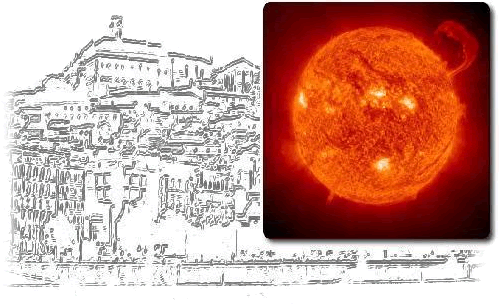|
|
|
|
|
|
|
|
|
|
|
|
|
Rui Pinto, Mr. - PhD |
|
IRAP, University of Toulouse, OMP/CNRS, Toulouse, France/td>
|
|
|
|
|
|
|
|
Session 3 - Poster |
|
X-ray emission in simulations of flaring coronal loops |
|
R. F. Pinto (1), N. Vilmer (2), P. Browning (3), M. Gordovskyy (3); 1 - IRAP, University of Toulouse, OMP/CNRS, Toulouse, France;
2 - LESIA, Observatory of Paris, France; 3 - Jodrell Bank Centre for Astrophysics, University of Manchester, United Kingdom |
|
|
|
Solar flares are associated with intense X-ray emission generated by hot
flaring plasma and by energetic particles in coronal magnetic loops. We investigate
the temporal, spatial and spectral evolution of the properties of the X-ray emission
produced in simulated kink-unstable magnetic flux-ropes (using MHD and test-particle
methods). The numerical setup used consists of highly twisted loops embedded in a
region of untwisted background coronal magnetic field. The magnetic flux-rope
reconnects with the background flux after the triggering of the kink instability and
is then allowed to relax to a lower energy state. Strong ohmic heating leads to
strong and quick heating (up to more than 15 MK), to a strong peak of soft X-ray
emission and to the hardening of the thermal X-ray spectrum. Particles are
accelerated in all the flaring loop volume, but the associated synthetic hard X-ray
emission is nevertheless concentrated near the footpoints. The amount of twist
deduced from the thermal X-ray emission alone is considerably lower than the maximum twist
in the simulated flux-ropes. The flux-rope plasma becomes strongly multi-thermal
during the flaring episode, and the emission measure evolves into a bi-modal
distribution as a function of temperature during the saturation phase, and later
converges to the power-law distribution during the relaxation/cooling phase. |
|
|
|
|
|
|
|




 









 |



